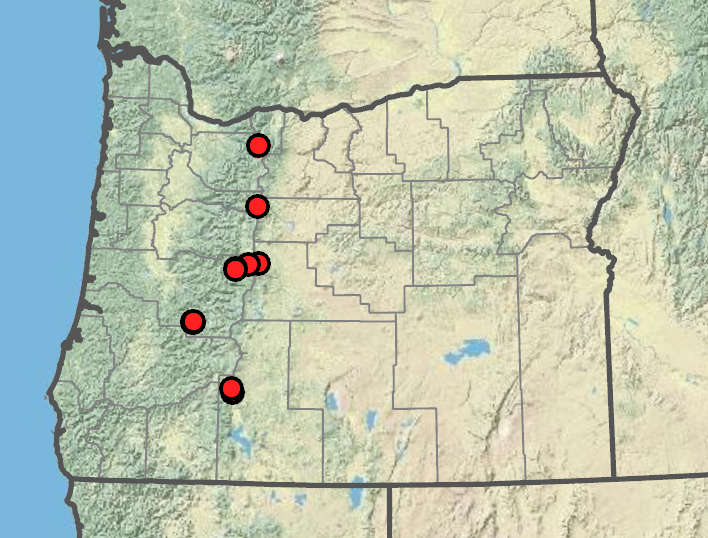Poa cuspidata
Poa chambersii
Chambers' bluegrass
nodes terete, 0–1 exserted.
intra- and extravaginal or mostly intravaginal.
sheaths closed 33–88% of their length, bases of basal sheaths glabrous;
collars smooth, glabrous;
ligules 0.5–2(2.5) mm;
cauline blades flat or folded, 2–5 mm wide; smooth or upper surface sparsely scabrous, mainly over the veins;
blades gradually reduced up the culm; uppermost blade 0.7–6 cm.
erect, lanceoloid to ovoid, tightly to loosely contracted, 2–9 cm;
spikelets 15–30;
proximal internodes less than 2 cm;
branches erect to ascending to slightly spreading, 1–2 per node, 0.9–3.2 cm, with 1–4 spikelets.
to 3 times as long as wide, 6–12 mm;
florets 2–7;
rachilla internodes 0.8–1.5 mm long.
60–80% as long as adjacent lemmas;
lower glumes 3-veined.
of at least some lower florets with sparse cobwebby hairs, rarely all florets glabrous;
hairs 1–2 mm.
lanceolate, 5–7 mm, distinctly keeled; smooth or sparsely finely scabrous, glabrous throughout or keels and marginal veins sparsely soft-puberulent over the proximal 20%; area between the veins glabrous, 5–7-veined;
tips acute.
vestigial and 0.1–0.2 mm, aborted late in development, or 1.8–3.7 mm.
Poa cuspidata
Poa chambersii
Openings in upland forest and snowmelt pockets in alpine areas. 1700–2800m. BR, Casc. Native.
Although some plants may be pistillate, populations always include individuals with functional anthers. Poa chambersii is similar to P. wheeleri and P. cusickii ssp. purpurescens, but the latter have denser inflorescences and only pistillate spikelets. Poa chambersii populations in the Cascades are dioecious; those on Steens Mountain are gynodioecious and will be described as a new species in the future.
Rob Soreng, Barbara Wilson, Richard Brainerd, Nick Otting


